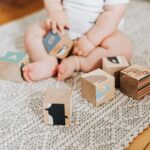Using Augmented Reality to Learn the Arabic Alphabet: A Modern Approach
Learning a new language can be challenging, but with the help of technology, it’s becoming more accessible and engaging. Augmented Reality (AR) is transforming the way we learn languages, and the Arabic alphabet is no exception. In this blog post, we’ll explore how AR can enhance your learning experience and make mastering the Arabic alphabet a fun and interactive journey.
Table of Contents
1. What is Augmented Reality?
2. Benefits of Using AR to Learn the Arabic Alphabet
3. Popular AR Apps for Learning Arabic
4. How to Get Started with AR for Arabic
5. Conclusion
6. FAQs
What is Augmented Reality? 🤔
Augmented Reality (AR) is a technology that overlays digital information—such as images, sounds, and text—onto the real world. Unlike Virtual Reality, which creates a completely immersive digital environment, AR enhances your real-world experience by adding interactive elements. With AR, learning becomes a multi-sensory experience, making it easier to grasp complex concepts like the Arabic alphabet.
Benefits of Using AR to Learn the Arabic Alphabet 🌟
AR offers numerous benefits for language learners:
1. Interactive Learning: AR turns passive learning into an active and engaging experience. You can interact with the Arabic letters, see how they are written, and hear their pronunciation—all in real-time.
2. Visualization: With AR, you can visualize the letters in 3D, helping you understand their shapes and structures better. This visual aid is particularly helpful for the Arabic alphabet, which is quite different from Latin alphabets.
3. Gamification: Many AR applications incorporate game-like elements, making learning fun and motivating. You can earn points, unlock levels, and compete with friends, all while learning.
Popular AR Apps for Learning Arabic 📱
Several AR apps can assist in learning the Arabic alphabet:
1. Mondly: This language learning app uses AR to create a virtual teacher who guides you through the Arabic alphabet and basic vocabulary.
2. JigSpace: While not exclusively for Arabic, this app allows you to explore 3D models of the Arabic alphabet, making it easier to understand the unique characteristics of each letter.
3. AR Alphabet: Specifically designed for learning alphabets, this app provides an interactive AR experience for each Arabic letter, complete with pronunciation guides.
How to Get Started with AR for Arabic 📚
Getting started with AR for learning Arabic is simple:
1. Choose the Right App: Start by selecting an app that best suits your learning style and goals. Consider trying a few to see which interface and features you prefer.
2. Set Learning Objectives: Define what you want to achieve. Whether it’s mastering the alphabet or building basic vocabulary, having clear goals will keep you motivated.
3. Practice Regularly: Consistency is key. Dedicate a few minutes each day to practice, and you’ll be surprised at how quickly you progress.
Conclusion
Augmented Reality is revolutionizing language learning, offering an engaging and effective way to master the Arabic alphabet. With the right tools and a commitment to regular practice, you can enhance your learning journey and embrace the beauty of the Arabic language. So why not give AR a try and see how it transforms your language learning experience?
FAQs 🤔
Q1: What is the best AR app for learning the Arabic alphabet?
A1: There are several great apps, such as Mondly and AR Alphabet, that offer engaging AR experiences tailored to learning the Arabic alphabet.
Q2: Can AR help with pronunciation?
A2: Yes! Many AR apps include audio features that help with pronunciation, allowing you to hear and mimic the correct sounds of the Arabic letters.
Q3: Do I need special equipment to use AR for learning Arabic?
A3: All you need is a smartphone or tablet with AR capabilities, and you’re ready to start your augmented learning journey!
Q4: Is learning with AR suitable for all age groups?
A4: Absolutely! AR apps are designed to be intuitive and user-friendly, making them accessible for learners of all ages.





